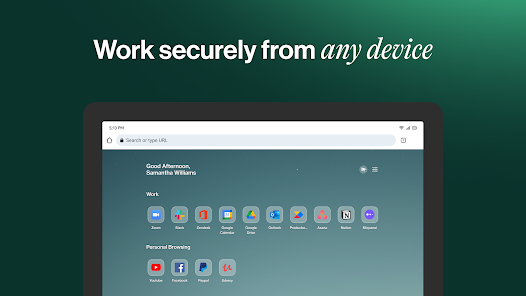Island Raises $250M for Cyber Browser. Why It Matters and Who’s Affected
What CEOs and IT leaders need to know about Island’s new browser
Latest Insight – Island raised $250M in Series E funding for its next-generation cybersecure enterprise browser, a potential game-changer for IT leaders and Chief Information Security Officers (CISOs). Here’s what you need to know and who should pay attention.
What Happened – Island recently closed its $250M Series E at a $4.8B valuation, fuelling expansion to Fortune 500 clients. Analysts call it one of the most significant enterprise security launches in recent years.
What It’s About – Island is a Chromium-based enterprise browser that embeds security, visibility, and policy enforcement directly into cloud applications (often called SaaS, or Software as a Service). It protects data and monitors activity without needing multiple add-on tools.
Who’s Behind It – Founded by Mike Fey (former Chief Operating Officer and Chief Technology Officer at Symantec and McAfee) and Dan Amiga (founder of Fireglass, acquired by Symantec for $250M), the company blends deep cybersecurity expertise with enterprise product experience.




Market & Competition – Island challenges traditional Data Loss Prevention (DLP) providers like Forcepoint and Trellix by baking security into the browser itself, something older tools cannot replicate. It also pressures cloud-native vendors such as Zscaler, which deliver Secure Access Service Edge (SASE) solutions for enterprise networks.
Funding & Financials – The company has raised $730M total, including the $250M Series E led by Coatue, funding research and development, global expansion, and enterprise adoption, all at a $4.8B valuation.
Valuation & Financial Outlook – At $4.8B, Island is one of the most valuable enterprise security startups. Research firm Gartner predicts enterprise browsers will be part of 25% of web security decisions by 2025 (up from 5% in 2022), potentially pushing Island’s valuation to $6–7B within 2–3 years.
Strategy & Vision – The company’s strategy is to replace traditional security layers (like separate DLP or Cloud Access Security Broker (CASB) tools) with a browser-first approach. The goal is a unified, secure workspace that improves user experience while scaling across global SaaS platforms.
Technology & Platform – Built on Chromium (the same foundation as Google Chrome), Island integrates security directly into everyday browsing. It supports Single Sign-On (SSO) systems such as Okta and Microsoft Entra ID while providing real-time analytics and IT visibility.
How to Use – Island is installed like Chrome or Firefox, it’s a standalone browser, not an extension. Employees log in with corporate credentials to access SaaS apps securely, while IT teams can deploy it through software distribution tools, virtual desktops, or app stores. The experience feels familiar to users but adds enterprise-grade security controls.
How This Technology Benefits Your Business – Island reduces the risk of data leaks, simplifies compliance, and consolidates multiple security tools into one browser. It helps IT leaders cut infrastructure costs, improve productivity, and ensure employees work securely without disruption.
Who It Benefits – Sectors with heavy SaaS usage, such as financial services, healthcare, higher education, and large enterprises, gain the most. IT leaders, CISOs, SaaS administrators, and employees all benefit from stronger security and smoother workflows.
Who It Affects – Island disrupts DLP providers like Forcepoint and Trellix, cloud security vendors like Zscaler, and even mainstream browsers such as Chrome and Firefox, as enterprises may adopt Island as the default browser for secure SaaS management.
Price Estimates – Island uses a subscription model with per-user licensing. Based on public contracts, pricing ranges from £150–£200 per user annually. For a 500-user company, this equates to $75K–$100K (£60K–£80K) per year, though enterprise contracts may include additional fees for integrations and support.
User Benefits – By adopting Island, organisations can replace multiple point solutions like DLP, CASB, and endpoint monitoring with a single tool. This reduces costs, simplifies IT management, strengthens compliance, and provides full visibility into SaaS activity, without disrupting employee workflows.
Challenges & Risks – Island faces challenges convincing businesses to replace entrenched DLP tools, balancing strong security with user experience, and proving return on investment (ROI). Resistance to moving away from mainstream browsers and integration hurdles may also slow adoption.
Recent Developments – In Q2 2025, Island launched AI Threat Shield, an artificial intelligence-powered detection system built into the browser. In Q3, it released the Island App Marketplace for partner integrations. In September, a $250–$300M employee tender offer pushed its valuation to $5B, signalling strong internal confidence.
Key Takeaways – Enterprise browsers are reshaping how companies balance security and productivity. Backed by $730M in funding, Island is positioned to disrupt SaaS protection. CEOs, CIOs, and IT leaders should track its rise and the pressure it puts on both security vendors and traditional browsers.


